I did some research into early Corvair shock absorbers and made a table to summarize my findings.

The part and stamping numbers come from my March 1, 1964 parts book. The Piston travel numbers for all except 1964 rear shock come from GM’s Vehicle Information Kits – we have a page on this website that links to them here.
However, I do not believe the GM Information Kits are completely accurate, because I checked the piston travel for both 1964 front and rear shocks and found that while the measurement stated for the front (4.75”) is correct, the measurement for the rear is wrong. The information kit states the 1964 rear piston travel is 4.75”, same as the front, but it’s actually only about 4”, so that is what I put in my chart for the 1964 rear shock.
But, if we can believe the rest of the information kit measurements, we can answer the question of why the 1963 rear shock has a different number than the 1960-62 rear shock – it has a shorter piston travel. And the different numbers for the other shocks is likely valving to account for different springs in wagons and HD suspensions.
However, it would be best to measure actual vintage shocks to confirm the piston travel numbers for all of the earlier (1960-63) shocks.
Attached photos are for 1964 front and rear factory shocks. The front shock is painted light grey primer, the rear is dark grey. The shocks are fully extended and it is obvious that the rear has a shorter piston travel.
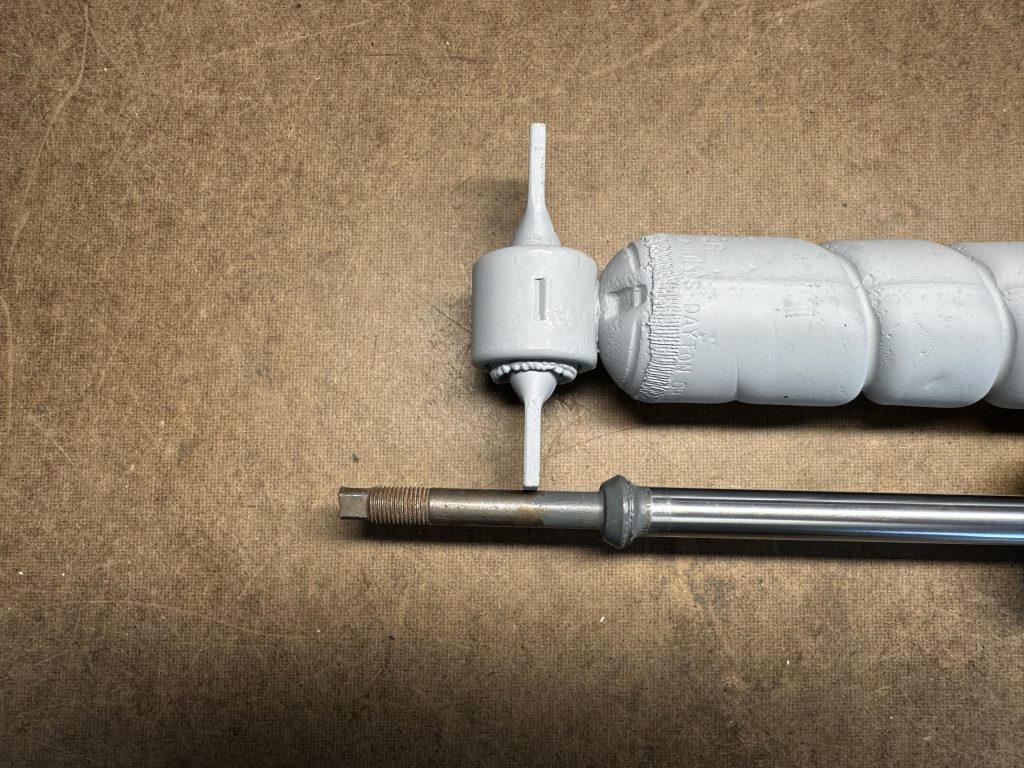
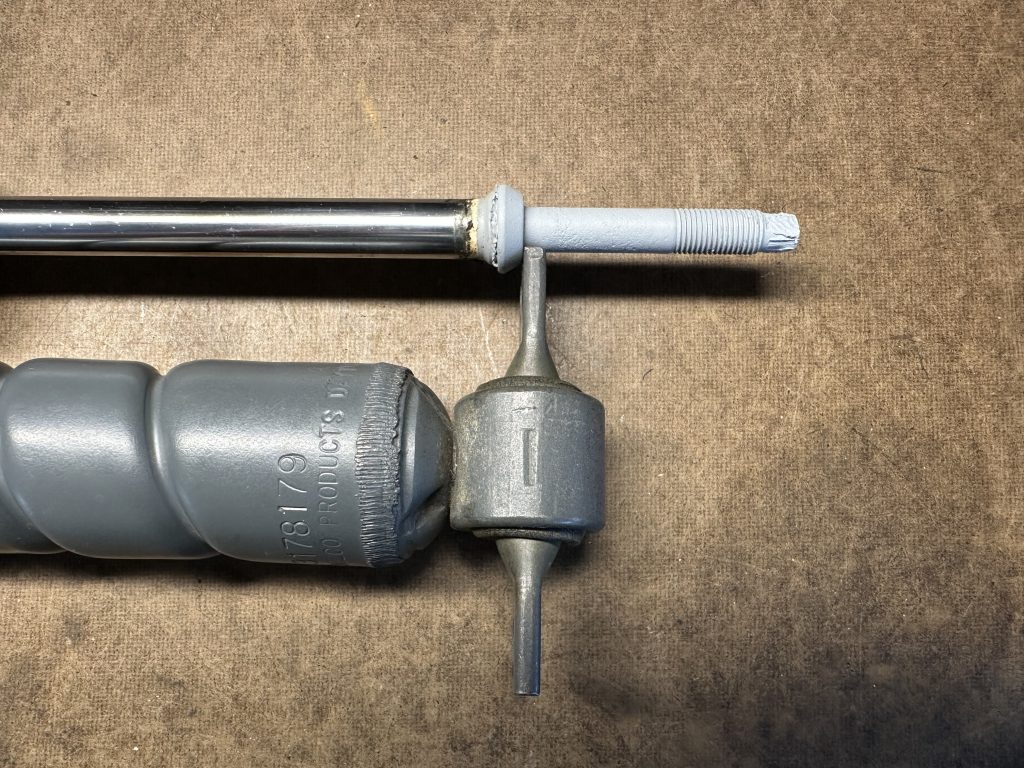
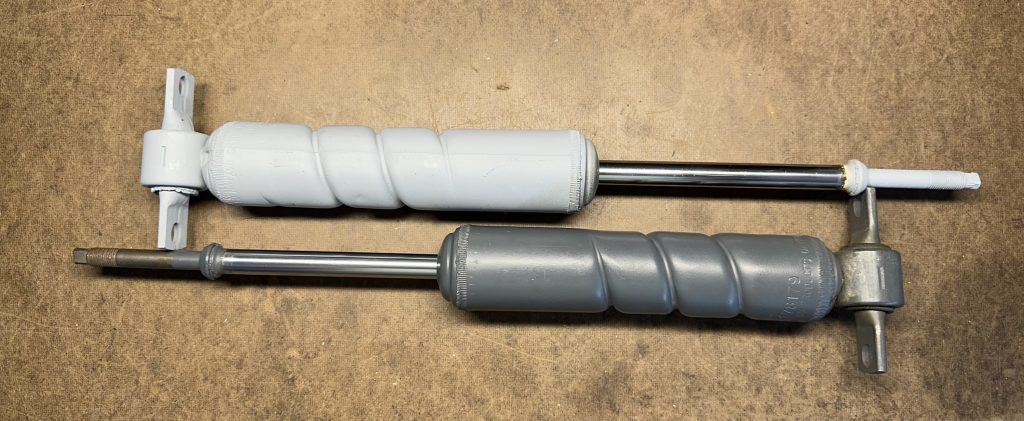
It makes sense that they would’ve changed the 1964 rear shock, given the other changes made to the 1964 rear suspension. We believe the rear shock was shortened to reduce stress on the leaf spring bushings when the control arm is at its lower end of travel.
If we can believe the other numbers from the GM information kits, it seems they also reduced the piston travel in 1963, perhaps to reduce the risk of “tuck-under”?
- The straight shifter started with the '60 Monza, in which the three-speed was of course the only manual transmission available. 61 Monzas with buckets and 3-speed continued to use the straight lever. GM Proving grounds photos are attached, showing the shifters for both years. These aren't prototype cars. They're ordinary…
- This post uses pages from the 1960-64 Assembly Manuals to explain the different rear mounting brackets used for Corvair Generators. The first two photos are from the 1960 Assembly manual, showing all three possible generators and their brackets: Generator Part # Bracket Part #Bracket Length & Description1100357 (7" short generator)37793017"…
- 1961-64 Corvairs with Air Conditioning have two switches, a blower switch on the left side that turns the system on/off and sets the blower speed, and an evaporator temp control switch on the right side that sets the temperature and turns the compressor on/off as needed. The temp control switch,…
- 1961-64 Corvairs have an internal gutter and drain hole in the rear end of the trunk. The reason for this design is unclear, but if water does get into this area of the trunk, it is supposed to drain out through the drain hole. However, this drain hole is often…
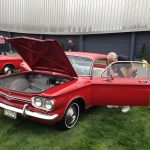 Media Photo AlbumVideo - Factory Exhaust SystemVideo - Tunnel area ASCE Inspection Summary Date Inspected: 07/23/2014Odometer 17495.2 original milesYear: 1964Model: MonzaBody Style: 2 door CoupeExterior Color: Ember RedInterior Color: Red and WhiteEngine: 110 HPTransmission: 4 speedRear Axle: 3.27Positraction: NoVIN: 40927W176657Build Date: 12DStyle: 64-0927Body Number: 36226Trim: 727Paint: 922-QACC: W2LP3C5V Inspected by:…
Media Photo AlbumVideo - Factory Exhaust SystemVideo - Tunnel area ASCE Inspection Summary Date Inspected: 07/23/2014Odometer 17495.2 original milesYear: 1964Model: MonzaBody Style: 2 door CoupeExterior Color: Ember RedInterior Color: Red and WhiteEngine: 110 HPTransmission: 4 speedRear Axle: 3.27Positraction: NoVIN: 40927W176657Build Date: 12DStyle: 64-0927Body Number: 36226Trim: 727Paint: 922-QACC: W2LP3C5V Inspected by:…- This article shows how I reconditioned the Air Distributor/Control pod for my 1964 Air Conditioned Convertible (the Glenn Corvair). This is the part of the AC system that is mounted under the radio housings, containing the air vents and the control knobs. For simplicity, I'll refer to it as the…
- In this article I will explore everything I’ve learned about Corvair radio antennas. As with all research projects, this article is subject to revision as new information becomes available. Corvair radio antennas can be roughly divided into four major groupings, based on antenna mast and body styles. These groups are:…
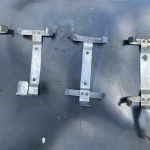 1960-65 Corvairs equipped with factory installed windshield washers were also supplied with a bottle of concentrated washer fluid. The history of the bottles has been previously documented by Kent Sullivan and Dave Newell in this article published in the CORSA Comminique. This post will deal with the metal brackets that…
1960-65 Corvairs equipped with factory installed windshield washers were also supplied with a bottle of concentrated washer fluid. The history of the bottles has been previously documented by Kent Sullivan and Dave Newell in this article published in the CORSA Comminique. This post will deal with the metal brackets that…- I acquired the original engine for the John Glenn Corvair with the purchase of the car back in 2001, but the engine was not installed in the car and it was not running. It sat on a cart in my garage for the past 17 years until I finally got…
- I am finally getting around to starting the restoration of my 1964 Corvair Monza Convertible - originally owned by John Glenn when he was still a NASA astronaut and living in Texas. As the first step, I am documenting the "numbers" - Here are some photos. I will add more…
- If you wish to have SCG members perform a virtual stock evaluation of your car, please complete the Stock Corvair Evaluation Questionnaire and submit photos of your car. Note that the Questionnaire has an area where it asks for various codes. Visit this page to learn about these codes and…
- Owned by Allen Bristow Click here to view the photo album Allen Bristow acquired this very nice 1963 Monza Coupe with Factory AC during 2020. It is a mostly all-original survivor with just under 40,000 miles and is in excellent condition. Although we were unable to have a formal Annual…
- The one and only Corphibian This post contains links to media about the 1961 Corphibian - the only commercially produced amphibious Corvair. This vehicle is based on the Loadside Pickup. Click on any of the links below to go to that media: Articles and Photo Albums: Corphibian History - the…
- All Corvair engines produced after November 29, 1963 were equipped with Blower Belt Guides, as noted in Technical Service Bulletin #982, dated March 18, 1962. This TSB also gives instructions for adding blower belt guides to earlier engines (1961-64). Thanks to Dave Newell for providing scans of this TSB.




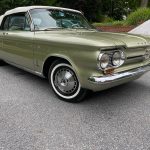
Bill, First of all, great article about the early shock absorbers!!! Second, I was remembering a tech tip from I believe was Larry Claypool stating the extended length on the early rear shocks was 12.75 inches from the lower shock mount up to the upset portion of the stud. What is the extended length of the 1964 rear shock that is in the photo? Thanks in advance. John Martin
John,
I measured them a bit differently .
Larry’s article in the August 1981 issue of CC said to measure them from the top of the mounting flange to the bottom of the rod stop, but I noticed that the rod stops are not the same thickness on all of the shocks, so I measured from the middle of the flange to the top of the rod stop. The top of the rod stop is where the lower bushing washer seats, so it’s a more accurate location to measure. My lengths will be a little bit longer than what Larry says in his article because I include the length of the rod stop.
Anyway, here’s my collapsed and extended measurements for rear shocks, 1960-64 Corvair, except factory, which is specifically for 1964:
Here are collapsed and extended measurements:
Factory (stamped 3178179) – 1964 only
—collapsed: 8 1/2 “
—extended: 12 1/2” (4” extension)
Pleasurizer (stamped P1068) 1960-64
—collapsed: 8 3/4”
—extended: 12 7/8” (4 1/8” extension)
Gabriel Red Ryder (P9034 BG75 004) 1960-64
—collapsed: 8 5/8”
—extended: 12 7/8” (4 1/4” extension)
So, yeah, the extended length of the factory 1964 rear shock is about 3/8” shorter than the replacement shocks that fit “all” early models.